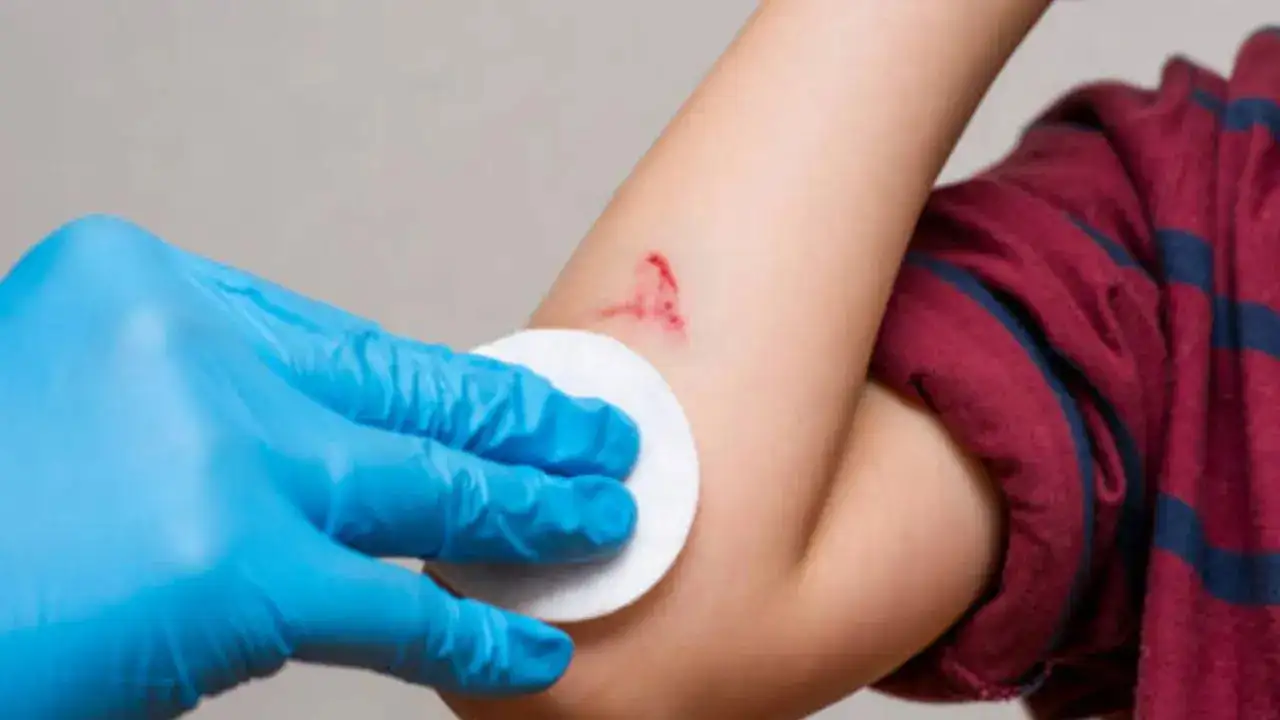
Using Dettol On Wounds? 'It Burns the Wound!' Dermatologist Says It Is NOT A Safe First-Aid Option (Image Credits: iStock)
For many of us growing up, Dettol or Savlon was the go-to solution for cleaning wounds. Whether it was a scraped knee from a fall on the playground or a minor cut while playing, these antiseptic liquids were the first things our parents or teachers reached for. Even today, most Indian households keep a bottle of antiseptic liquid in their first-aid kits, believing it to be essential for quick wound healing. But did you know it is not the best way and it may be harmful?
According to dermatologist Dr Manjot Marwah, this long-held belief might be doing more harm than good. In a recent podcast shared by content creator Raj Shamani on YouTube (April 1), Dr Marwah revealed that applying Dettol directly on wounds is actually harmful.
Why You Shouldn't Use Dettol On Wounds
“Don't apply Dettol on wounds,” Dr Marwah shares in the podcast. She explained that antiseptic liquids like Dettol and Savlon can burn the wound, potentially slowing down the healing process. “You should clean it with water,” she said, adding that no dermatologist would recommend using Dettol to clean cuts or scrapes.
Her statement surprised even the host, who, like many Indians, grew up with the belief that antiseptic liquids were the gold standard in wound care. Dr Marwah further explained that while these products are commonly seen in homes and sometimes in clinics, medical professionals don’t actually use them for wound cleaning. “Doctors and dermatologists typically use Betadine instead,” she explained.
The Better Way to Clean Wounds
So, what should you do if you get a cut or scrape? According to Dr Marwah, the answer is simple and surprisingly accessible.
Here’s the right way to clean a wound:
- Wash your hands thoroughly with soap and water before touching the wound.
- Rinse the wound gently under clean running water to remove dirt, debris, and bacteria.
- Avoid using harsh antiseptics like Dettol or Savlon, as they may irritate the skin and delay healing.
- If needed, you can use a mild soap around the area—but not directly inside deep wounds.
- Pat the wound dry with a clean towel or sterile gauze.
- Apply a topical antibiotic like Betadine or consult a doctor for a suitable alternative.
- Cover with a sterile bandage, especially if the wound is at risk of getting dirty.
- Change the dressing daily or if it becomes wet or dirty.
A study titled The cytotoxicity of antiseptics and their effect on wound healing published in Wound Medicine found that many commonly used antiseptics—including chloroxylenol (the active ingredient in Dettol)—can be toxic to keratinocytes and fibroblasts, the skin cells vital for healing. It’s clear that many of the first-aid methods we grew up with need to change. Just because something is commonly used doesn’t mean it’s the best or safest option.
Get Latest News Live on Times Now along with Breaking News and Top Headlines from Health and around the world.


